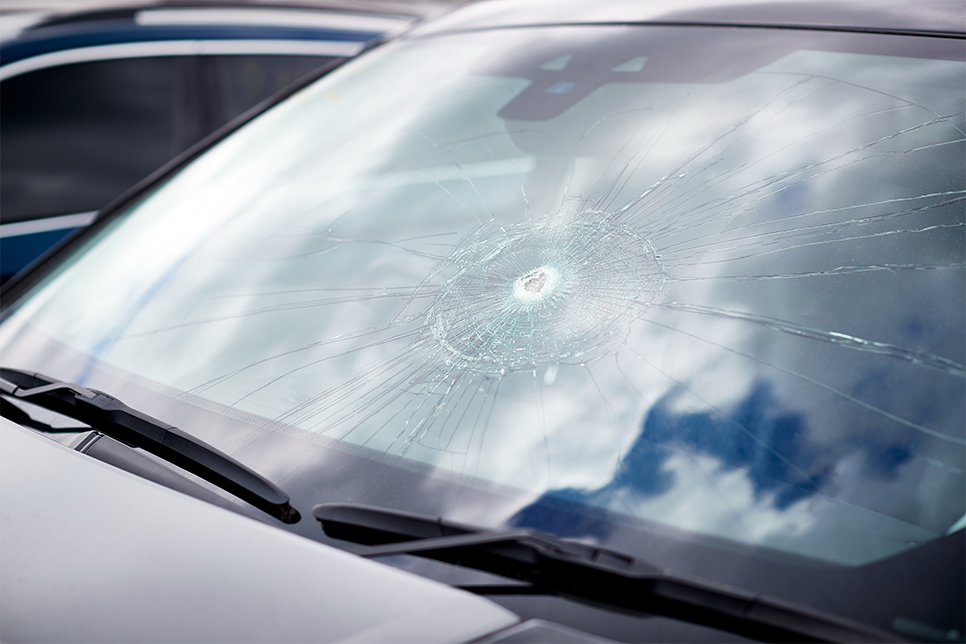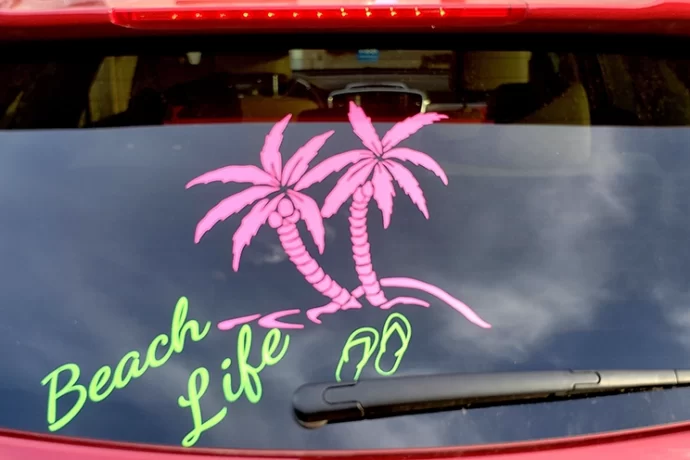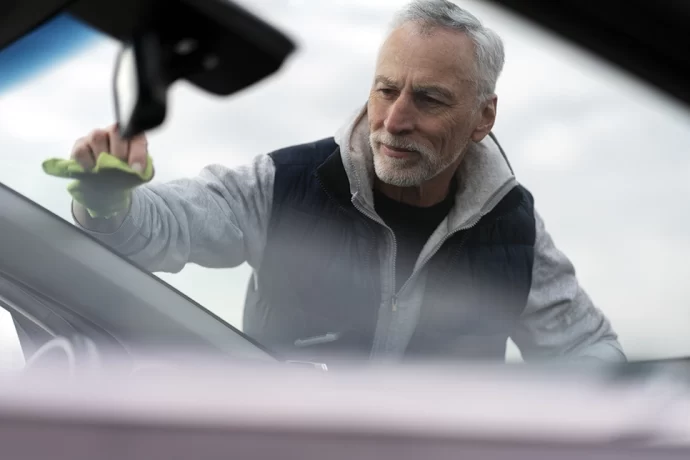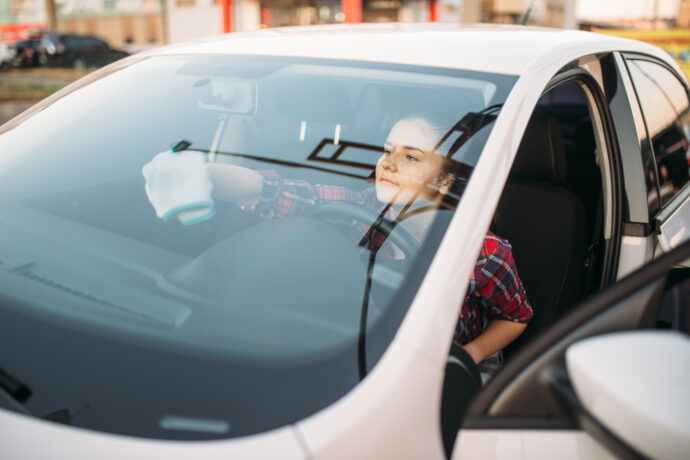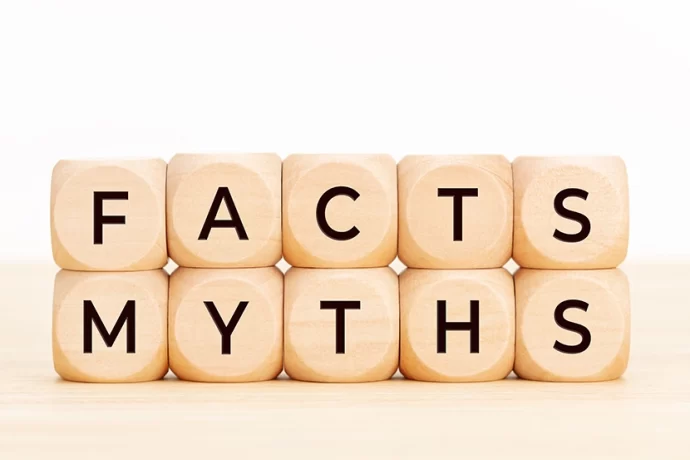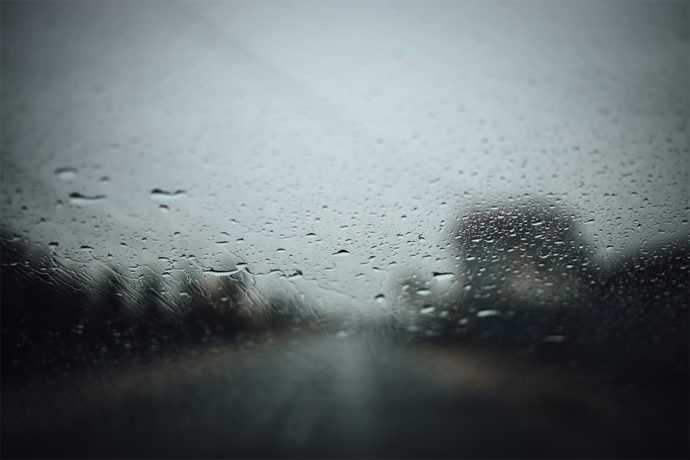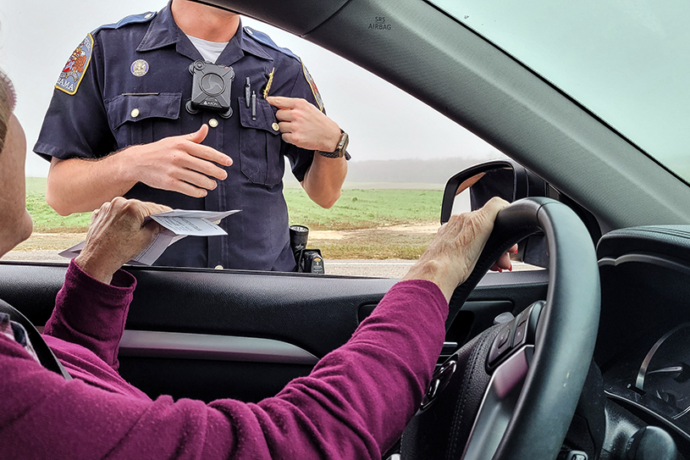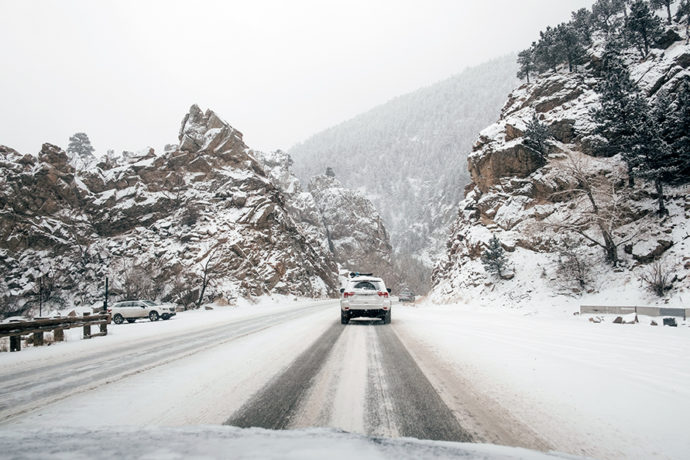Your windshield isn’t just a piece of glass; it’s your shield against the elements, flying debris, and those pesky Colorado hailstorms. Plus, let’s be honest, a pristine windshield just looks better.
Whether you’re a seasoned driver or just got your license, everyone can benefit from a little windshield wisdom. And who better to guide you than us at Precision Auto Glass? We’ve seen it all, from tiny chips to massive shatters, and we’re here to share our expertise.
In this comprehensive guide, we’ll dive deep into the world of windshield damage. We’ll explore its causes, its types, and most importantly, how to prevent it.
1. Regularly Inspect Your Windshield
You inspect your outfit before heading out, give your teeth a once-over in the mirror after eating, and probably even check your phone for smudges. So, why not give your windshield the same courtesy? Regular inspections can be the difference between catching a minor issue early and facing a major headache down the road.
Life’s busy. Between work, family, and trying to catch the latest episode of that show everyone’s talking about, it’s easy to overlook the small things. But when it comes to your windshield, those small things can quickly escalate. By setting a reminder to inspect your windshield once a week, you can spot potential problems before they worsen. It’s a simple habit that can save you time, money, and stress in the long run.
While a keen eye is your best tool, consider investing in a magnifying glass or even a simple flashlight. These can help you spot minor imperfections that might be missed in regular daylight. Remember, it’s not just about looking for tiny cracks or chips. Discoloration, fogging between the layers of glass, or even small scratches can all be signs of potential issues.
2. Avoid Sudden Temperature Changes
Denver’s weather can be unpredictable, to say the least. One moment it’s sunny and warm, and the next, you’re greeted with a surprise snowstorm. While this keeps things interesting, it’s not exactly great for your windshield. Sudden temperature changes can be its arch-nemesis, leading to unexpected and unwanted windshield damage.
The Science Behind the Shatter
Glass expands and contracts with temperature changes. When your windshield is exposed to extreme temperature fluctuations in a short amount of time, it can cause stress, leading to windshield cracks or worsening existing ones. Imagine pouring hot water into a frozen glass – not the best idea, right? The same principle applies to your windshield when weather shifts from low to high temperatures or vice versa.
Tips for Gradually Warming or Cooling Your Car
- Start Slow: On a cold morning, resist the urge to blast the heater immediately. Start with a lower temperature and gradually increase it. Your windshield will thank you.
- Seek Shade: In the summer and on hot days, try to park your car in shaded areas or use a sunshade to reduce the greenhouse effect inside your car. This not only protects your windshield but also keeps your car’s interior cooler.
- Use Lukewarm Water: If you’re in a hurry and need to defrost your windshield, avoid using boiling water. Lukewarm water is a safer bet, reducing the risk of thermal shock and a cracked windshield.
3. Keep a Safe Distance from Large Vehicles on the Road
We’ve all been there: cruising down the highway when suddenly – thwack! – a rogue pebble, flung from the tire of the truck ahead, strikes our windshield. It’s a startling, frustrating experience, and one that can lead to unsightly rock chips and potentially dangerous windshield damage.
The Perils of Tailgating
Large vehicles, like trucks, semis, and construction vehicles, often tread on loose gravel, debris, and other small objects on the road. When these objects and road debris get caught in their tires, they can be hurled backward with surprising force. If you’re following too closely, your windshield becomes the unfortunate recipient of these high-speed projectiles.
Tips for Safe Following:
- Maintain Distance: As a rule of thumb, for every 10 mph you’re driving, stay at least one car length behind the vehicle in front of you. So, if you’re going 60 mph, aim for a minimum of six car lengths.
- Beware of Construction Zones: These areas are notorious for loose gravel and debris. When driving through, reduce your speed and increase your following distance.
- Stay Alert: Always keep an eye on the road ahead. If you see a large vehicle swerving or notice debris flying, take evasive action if safe to do so.
4. Invest in High-Quality Windshield Wipers
Windshield wipers might seem like a minor component for many car owners, but they play a significant role in maintaining clear visibility and preventing windshield damage. Think of them as the unsung heroes of stormy drives and snowy adventures. However, when these wipers wear out or aren’t up to par, they can do more harm than good.
Old or low-quality wipers can become hard and brittle. Instead of smoothly gliding across your windshield, they might scrape and scratch, leaving behind streaks or even causing minor abrasions. Over time, these seemingly insignificant scratches can accumulate dirt and moisture, leading to more prominent and noticeable damage.
Choosing the Right Wipers
- Material Matters: Modern wipers come in various materials, including rubber, silicone, and coated blades. While silicone blades tend to last longer and perform better in extreme conditions, they can be pricier. Choose based on your driving conditions and budget.
- Size and Fit: Not all wipers fit all cars. Ensure you pick the right size for your vehicle. An ill-fitting wiper can miss spots or, worse, damage the edges of your windshield.
- Regular Replacement: Windshield wipers aren’t forever. Depending on usage and environmental conditions, consider replacing them every 6 to 12 months.
Practical Tips for Wiper Care
- Clean Regularly: Every time you fill up your gas tank, give your wiper blades a quick wipe with a damp cloth. This simple act can remove accumulated dirt and extend their lifespan.
- Avoid Ice Build-Up: In the colder months, make sure to clear any ice or snow from your windshield before using the wipers. Using them to de-ice can damage the blades and put undue stress on the wiper motor.
- Park Smart: In extreme heat, consider lifting your wiper blades off the windshield when parking. This prevents them from sticking to the glass and prolongs their efficiency.
The Bottom Line: Your windshield wipers are more than just rain sweepers. They’re essential tools in maintaining the integrity and clarity of your windshield. By investing in high-quality wipers and caring for them properly, you not only ensure a clear view but also protect your windshield from potential scratches and damage. So, the next time it rains, you can drive with confidence, knowing your trusty wipers have got you covered. Literally.
5. Park Smartly
Parking might seem like the least of your worries when it comes to windshield damage. After all, your car is stationary, right? What could possibly go wrong? Well, as it turns out, where and how you have your car parked can have a significant impact on the health of your windshield.
The Sun’s Sneaky Effects
Direct sunlight isn’t just a menace to your skin; it’s also a potential hazard for your windshield. Prolonged exposure to the sun can weaken the auto glass, making it more susceptible to cracks and damage. Plus, the interior of your car can become a veritable oven, causing materials to off-gas and leave a residue on the inside of your windshield.
Tips for Sun-Savvy Parking
- Seek Shade: Whenever possible, park in shaded areas. Whether it’s under a tree (watch out for sap and birds!) or in a covered parking structure, a little shade can go a long way in protecting your windshield.
- Use Sunshades: If shade is scarce, invest in a good-quality sunshade. Not only does it protect your windshield, but it also keeps your car’s interior cooler and protects the dashboard from UV damage.
- Ventilate: Leave your windows slightly open to allow hot air to escape. This reduces the temperature inside your car and prevents heat-related windshield stress.
Beware of Trees and Overhanging Objects
While trees offer lovely shade, they can also be a source of windshield woes. Falling branches, sap, and even bird droppings can cause damage or leave stubborn stains on your windshield.
Safety First
When parking on the street, especially in busy areas of Denver, be mindful of passing traffic, construction activities, and kids playing. All these can inadvertently lead to objects hitting and damaging your windshield.
6. Address Minor Chips and Cracks Immediately
It’s a beautiful day in Denver, and as you’re admiring the view, you spot it—a tiny chip on your windshield. It might seem insignificant now, but like that one sock that mysteriously disappears from the laundry, it can quickly escalate into a bigger problem to the point where you need to have your windshield replaced.
The Domino Effect of Neglect
A chipped windshield or windshield crack might seem harmless, but it compromises the structural integrity of your windshield. With Denver’s varying temperatures and occasional bumpy roads, that minor blemish can expand into a sprawling crack in no time. And once it reaches a certain size, there’s no going back—you’ll need a complete windshield replacement.
Why Immediate Action is Crucial
- Safety First: A damaged windshield can impair your vision, increasing the risk of accidents. Moreover, in the event of a collision, a compromised windshield might not provide the necessary protection.
- Cost Savings: Addressing a small chip is considerably cheaper than replacing an entire windshield. By acting promptly, you save money in the long run.
- Prevent Further Damage: Sealing a chip or crack prevents dirt and moisture from entering, which can exacerbate the damage over time.
Choosing Between Repair and Replacement
- Size and Depth Matter: Generally, chips smaller than a quarter and cracks less than three inches long can be repaired. However, if they’re deeper or in the driver’s line of sight, replacement might be the safer option.
- Location is Key: Cracks near the edge of the windshield tend to spread faster and can compromise the structural integrity of the entire glass. In such cases, replacement is often recommended.
At Precision Auto Glass, we understand the importance of a flawless windshield. Our team of experts can assess the damage and recommend the best course of action, be it a windshield repair or a full windshield replacement. With state-of-the-art equipment and a commitment to excellence, you can trust us to restore your windshield to its former glory.
When it comes to windshield damage, the old adage holds true: “A stitch in time saves nine.” Addressing minor issues promptly can save you from bigger headaches down the road. So, the next time you spot a chip or crack, don’t delay. Your safety—and your wallet—will thank you.
7. Use the Right Cleaning Products and Techniques
A clean windshield isn’t just about aesthetics; it’s a vital component of safe driving. However, not all cleaning methods are created equal. Using the wrong products or techniques can inadvertently cause damage, turning your windshield cleaning session into a costly affair.
The Dangers of Improvisation
It might be tempting to grab the nearest cleaner and scrub away, but some household products can be abrasive or contain chemicals harmful to auto glass and the protective coatings on your windshield.
Choosing Windshield-Friendly Cleaning Agents:
- pH Balanced Cleaners: Opt for cleaners specifically designed for auto glass. They’re formulated to be gentle on your windshield while effectively removing dirt and grime.
- Avoid Ammonia-Based Products: While great for windows in your home, ammonia can damage the tint on car windows and can be harmful if inhaled in the confined space of a vehicle.
- Natural Alternatives: A mixture of distilled water and white vinegar or a touch of dish soap can be an effective and eco-friendly cleaning solution.
Techniques for a Streak-Free Shine:
- Microfiber Magic: Ditch those old rags and newspapers. Microfiber cloths are gentle on the glass, won’t leave lint behind, and can effectively remove dirt without scratching your windshield.
- Circular Motions: When cleaning, use a circular motion to prevent streaking and ensure even coverage.
- Don’t Forget the Inside: The exterior isn’t the only part that needs cleaning. Dust and grime can accumulate on the inside too. Regularly wipe down the interior of your windshield for optimal clarity.
- Avoid Direct Sunlight: Cleaning your windshield in the sun can cause your cleaning solution to evaporate quickly, leading to streaks. Aim for a shaded spot or clean your windshield in the cooler parts of the day.
Bonus Tip: Wiper Maintenance
While you’re at it, give your wipers a quick clean. Wiping the blades with a cloth dipped in a mixture of water and mild dish soap can remove accumulated dirt and extend their lifespan.
8. Consider a Windshield Protection Film
In the world of windshield care, protection films are like the unsung superheroes—always there, always guarding, but often overlooked. Much like how sunglasses shield your eyes from harmful UV rays and glare, a windshield protection film acts as a barrier against various external threats, ensuring your windshield remains in tip-top condition.
The Lowdown on Protection Films
Windshield protection films are thin, transparent layers applied to the exterior of your windshield. Made from high-quality materials, these films are designed to offer an added layer of protection and protect windshields against chips, cracks, and other potential damages.
Benefits of Protective Films:
- Impact Resistance: The film acts as a buffer, reducing the risk of chips or cracks from flying debris, rocks, or other road hazards.
- UV Protection: Some films offer UV protection, reducing the harmful effects of the sun on your car’s interior and helping to keep it cooler during those scorching Denver summers.
- Improved Visibility: By reducing glare and ensuring a smoother surface free from minor abrasions, protective films can enhance visibility, especially during rain or snow.
- Easy Maintenance: Dirt and water tend to slide off more easily from a protected windshield, making cleaning a breeze.
While it might be tempting to turn this into a DIY project, it’s best to leave the installation to professionals. Precision application ensures no bubbles, wrinkles, or misalignments, guaranteeing optimal protection and clarity.
Cost vs. Benefits
While there’s an initial investment involved in getting a windshield protection film, it can save money in the long run. By preventing potential damages and reducing the need for repairs or replacements, the film can quickly pay for itself.
9. Install a Hood Bug Deflector
Driving on open roads, especially during warmer months, often means an onslaught of bugs splattering against your windshield. Beyond the obvious nuisance and the task of cleaning, these tiny critters can sometimes cause minor abrasions on your windshield. Enter the hood bug deflector—a simple accessory with significant benefits.
Why Consider a Bug Deflector?
- Redirect Airflow: The primary function of a bug deflector is to alter the aerodynamics of your vehicle slightly. By doing so, it pushes the airflow—and the bugs caught in it—upwards and over your car, sparing your windshield from a bug barrage.
- Protection from Small Debris: While they’re called “bug deflectors,” these accessories also help redirect small stones, dust, and other debris away from your windshield.
Installation and Maintenance
Installing a bug deflector is generally straightforward, with most designed for specific vehicle models to ensure a perfect fit. Regular cleaning, just as you would your windshield, ensures it remains effective and looks great.
10. Avoid Potholes and Rough Terrains
Denver’s streets, while scenic, can sometimes surprise you with the occasional pothole or rough patch. These aren’t just threats to your tires; they can be hazards for your windshield too.
The Jarring Truth
Hitting a pothole can send a shockwave through your vehicle, jolting everything—including your windshield. If your windshield has any existing minor damage, this sudden jolt can exacerbate it, turning a tiny chip into a sprawling crack.
Navigating the Road Smartly
- Stay Alert: Always keep an eye on the road ahead. Forewarning allows you to slow down or safely navigate around a pothole.
- Maintain Safe Speeds: Driving at a safe speed gives you more reaction time and reduces the impact if you do hit a pothole.
- Avoid Water Puddles: After rain, potholes can be hidden under puddles. If possible, steer clear of them or approach with caution.
11. Handle Doors Gently
It might seem unrelated, but the way you handle your car doors can impact your windshield’s health. A gentle touch can go a long way in preserving its integrity.
The Impact of a Slam
Every time a car door is slammed, it creates a vibration throughout the vehicle. While a single slam might not be harmful, repeated jarring can weaken the edges of your windshield, especially if there’s existing damage.
Mindful Habits to Cultivate
- Educate Passengers: Let your passengers know the importance of closing car doors gently.
- Check Door Seals: Ensure the rubber seals around your doors are in good condition. They absorb some of the impact when doors are shut.
- Regular Maintenance: Occasionally lubricating the door hinges can ensure they close smoothly without needing extra force.
12. Navigate Storms Wisely
Denver’s dynamic weather, complete with hailstorms and gusty winds, can be a challenge for any driver. When it comes to protecting your windshield, a bit of weather wisdom can make all the difference.
Facing the Fury of Hail
Hailstones, ranging from tiny pellets to golf ball-sized or even larger, can wreak havoc on your windshield. If you’re caught in a hailstorm:
- Seek Shelter: If possible, pull over under a gas station canopy, bridge, or any other shelter.
- Angle Your Car: Hail often comes down at an angle. If safe to do so, angle your car so the hail hits the front rather than the windshield.
- Use Blankets or Floor Mats: In a pinch, placing floor mats or blankets over the windshield can offer some protection.
Guarding Against Gusts
Strong winds can carry debris, dust, and even larger objects, posing a threat to your windshield.
- Park Strategically: If you know a windstorm is coming, try to park your vehicle in a direction where it’s shielded from the prevailing winds.
- Avoid Trees: While it might seem like a good idea to park under a tree for protection, winds can break branches or blow down weak trees.
By understanding the challenges posed by the weather and taking proactive steps, you can significantly reduce the risk of windshield damage during storms.
Know When to Seek Professional Help
While a touch of DIY spirit can be commendable in many situations, when it comes to your windshield, there are times when it’s best to call in the experts. Your windshield is a crucial component of your vehicle’s safety system, and any compromise in its integrity can have far-reaching consequences.
Signs You Need a Professional’s Touch:
- Expanding Cracks: If a crack in your windshield is growing rapidly or spreading out in multiple directions, it’s time to consult a professional. These can compromise the structural integrity of the glass.
- Impaired Vision: Any damage that obstructs the driver’s line of sight needs immediate attention. This isn’t just about aesthetics; it’s a critical safety concern.
- Edge Cracks: Cracks or chips near the edge of the windshield can weaken its overall stability. These damages are often more severe than they appear and require expert assessment.
- Internal Damage: If your windshield shows signs of fogging between layers or displays a rainbow pattern, it might have sustained internal damage. This is a clear sign to seek professional help.
Precision Auto Glass: Your Trusted Windshield Partner
At Precision Auto Glass, we pride ourselves on delivering top-notch windshield services, whether that’s fixing cracked windshields or providing a full windshield replacement. Our team of trained professionals uses state-of-the-art equipment and techniques to ensure your windshield is in the best possible condition.
Why Choose Professional Services?
- Guaranteed Quality: Professionals ensure the successful repair or replacement meets industry standards, ensuring your safety on the road.
- Time-Efficient: With the right tools and expertise, professionals can address windshield issues promptly, getting you back on the road faster.
- Cost-Effective: While there’s an upfront cost, professional repairs can save you money in the long run by preventing further damage or potential accidents.
In Conclusion
Your windshield is more than just a piece of glass; it’s a shield that protects you from the elements, ensures clear visibility, and plays a vital role in your vehicle’s safety.
So, when it shows signs of damage, don’t take chances. Trust the experts, like our team at Precision Auto Glass, to provide the care and expertise your windshield deserves to make the needed repair or replace your windshield. After all, peace of mind on the road is priceless. Drive carefully.

